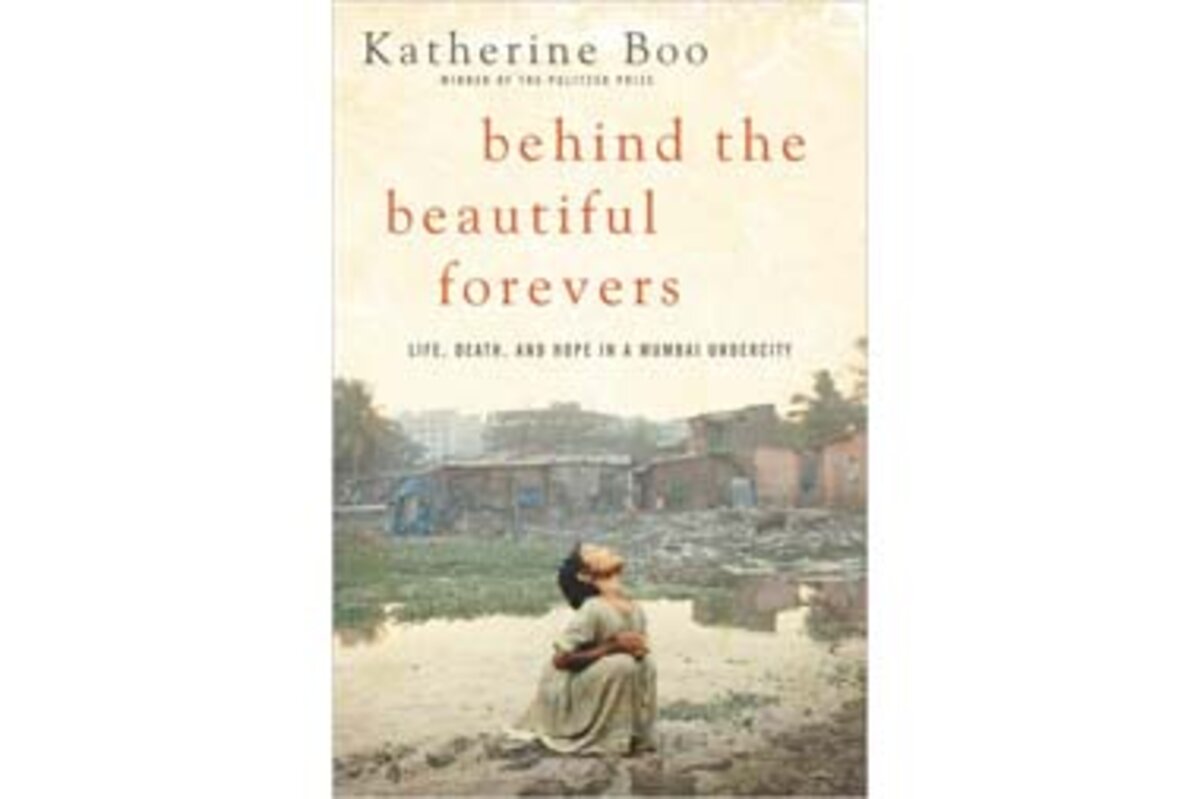Behind the Beautiful Forevers: Life, Death, and Hope in a Mumbai Undercity
Loading...
Remember the title of Katherine Boo’s new book Behind the Beautiful Forevers: Life, Death, and Hope in a Mumbai Undercity, because you will see it on upcoming nominee lists for the next round of Very Important Literary Prizes. That Boo won the Pulitzer in 2000, a MacArthur “Genius” Fellowship in 2002, became a staff writer for The New Yorker in 2003 (contributor since 2001) after 10 years with The Washington Post, and is just now publishing her debut title, will guarantee media coverage. That “Beautiful” is an unforgettable true story, meticulously researched with unblinking honesty, will make Boo’s next awards well-deserved.
From November 2007 to March 2011, Boo became a regular fixture in Annawadi, “the sumpy plug of slum” next to the constantly modernizing international Mumbai airport, and home to 3,000 inhabitants “packed into, or on top of 355 huts.” Settled in 1991 by Tamil Nadu laborers from southern India hired to repair an airport runway, 21st-century Annawadi sits “where New India collided with old India and made new India late.” Encircling Annawadi are “five extravagant hotels,” luxurious evidence of India’s growing global presence: “’Everything around us is roses,’” describes an Annawadian, “’And we’re the sh*t in between.’” In this fetid microcosm, everyday dramas range from petty jealousies to explosive violence fueled by religion, caste, and gender.
At the center of Boo’s story is garbage trafficker Abdul, the oldest son and prime earner of the 11-member Husain family who comprise almost one-third of Annawadi’s three-dozen Muslim population. Thoughtful, quiet Abdul, who is 16 or 19 – “his parents were hopeless with dates” – his ill father, and his older sister stand accused of beating their crippled neighbor One Leg and setting her on fire. For three years, the family is victimized by a labyrinthine legal system controlled by open palms constantly demanding payment.
Life continues in Annawadi: Asha, a lowly-paid kindergarten teacher, works her growing political connections toward escaping the slum, determined her daughter Manju will become Annawadi’s first college graduate. Manju’s best friend Meena wants something more than to be a teenage bride trapped in an arranged marriage: “Everything on television announced a new and better India for women,” but “marrying into a village family was like time-traveling backward.”
The toilet cleaner Mr. Kamble is literally dying to raise enough money for a new heart valve so he can continue to shovel sewage and feed his family. The tiny scavenger-turned-thief Sunil (first introduced to Western readers in Boo’s February 2009 New Yorker article) worries that he will remain forever stunted, but at least he’s not a “baldie” like his taller, younger sister whose rat bites have become “boils [that] erupted with worms.” Meanwhile, thieving Kalu recreates the latest Bollywood films with his talented impersonations, entertaining slum kids who will never witness such marvels themselves.
Mumbai, for its marvelous rebirth, remains the largest city in an India that, in spite of being “an increasingly affluent and powerful nation … still housed one-third
of the poverty, and one-quarter of the hunger, on the planet.” With the wealth of India’s top 100-richest equaling almost a quarter of the country’s GDP, today’s gap between top and bottom is virtually unfathomable.
Having built her lauded career on capturing the experiences of those living in some of America’s poorest communities, Boo moves “beyond [her] so-called expertise” to her husband’s country of origin, ready to “compensate for my limitations the same way I do in unfamiliar American territory: by time spent, attention paid, documentation secured, accounts cross-checked.” Once the Annawadians accepted the novelty of her foreign presence, “they went more or less about their business as I chronicled their lives” on the page, on film, on audiotape, in photos.
Throughout such careful documentation, the one element missing – very much to her credit – is Boo herself. “Beautiful” is by no means a personal memoir; it is not a socioeconomic study on poverty, nor a political treatise on widespread corruption. “Beautiful” is pure, astonishing reportage with as unbiased a lens as possible about specific individuals who populate a clearly demarcated section of ever-changing Mumbai.
The details of Boo’s process – with a glimpse into her experiences – are added in the “Author’s Note” at book’s end. Further details about Boo follow in “A Conversation with Katherine Boo” conducted by Random House power editor Kate Medina. Before ever "meeting" Kate Boo, readers thoroughly experience Annawadi with Abdul, One Leg, Manju, Sunil, and so many memorable others. Boo’s presence as the silent reporter remains so discreet throughout that she virtually disappears as you journey deeper and deeper, unable to turn away.
Terry Hong writes , a book review blog for the Smithsonian Asian Pacific American Program.





